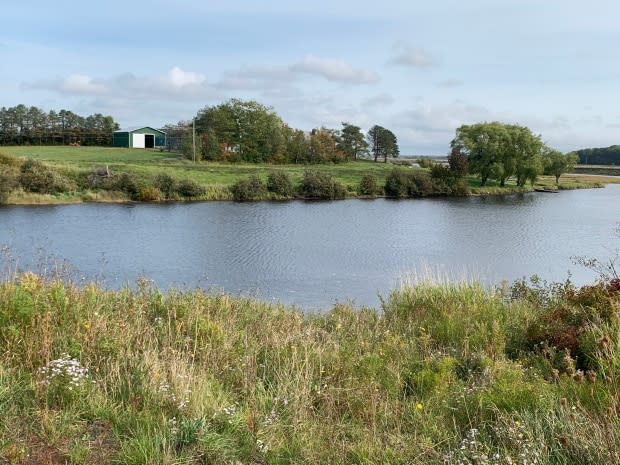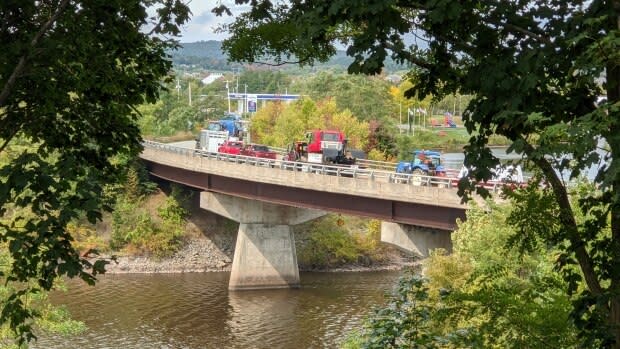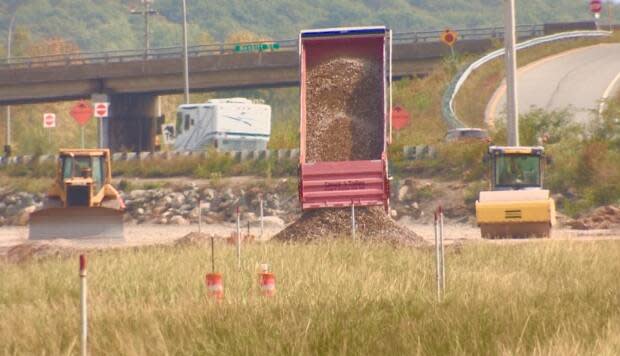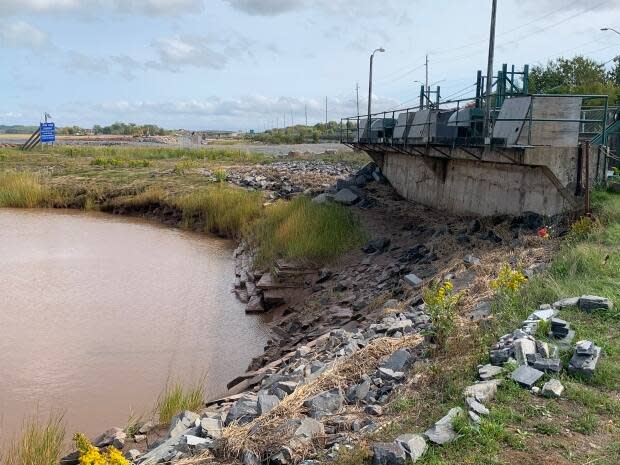Avon Valley group worried that salinity levels on the rise in local river
A group calling itself the Avon River Freshwater Stakeholders wants something done to lower the salt water levels in the river, which runs through the western part of Nova Scotia's Hants County.
Jim Boylan is a group member and one of the co-owners of Ski Martock, which uses the river as its main water source for snow making. Water tests done in August and early September by Envirosphere Consultants showed salinity levels are rising.
Boylan said water with salt in it needs colder temperatures to freeze and could damage Ski Martock's pipes.
"Our biggest concern is our ability to make snow with it and what will happen to the water once it runs back off and goes downstream of us," said Boylan. "It will affect numerous farmers along the way as it goes back to the river."
The crux of the issue, said the group, is that more salt water from the Minas Basin is now entering the river during high tide through gates under the Highway 101 causeway designed to allow fish through to spawning grounds upriver.
The highway is being twinned through the area, and Avon River Freshwater Stakeholders said they believe the gates are being opened longer after concerns were raised by conservationists that water flow was being restricted near the work site.

Many farmers in the fertile Avon Valley also use the river to irrigate crops and in some cases it is a drinking supply for pastured livestock.
"There's been some strawberries that have been affected and there have been some cattle that got sick from the salt water," said Martock farmer Victor Oulton, who is also the president of the Nova Scotia Federation of Agriculture.
"There's not many regions where you have 3,500 to 4,000 acres of prime farmland with that kind of a water source that runs right through the middle of it."

On Sunday, the Avon River Freshwater Shareholders held an awareness parade in Windsor to inform the community of their concerns.
"We're all for fish passage, we all want to see fish get through, but we need a system that can benefit everybody and preserve our freshwater reservoir as well," said Oulton.

The aboiteau system now in place was built 50 years ago, but the Department of Transportation said it will be replaced with a new one as part of the twinning project.
For close to four months a number of First Nations people and their supporters have been occupying the causeway, concerned rocks and fill from the twinning project have been spilling into the water. They are also fighting for better fish passage and are seeking a peaceful resolution to the issue.
"I think if we bring the academic knowledge, our history and local knowledge and traditional knowledge together, this can be solved without pitting people against each other," said supporter Audra Raulyns, one of half a dozen people at the causeway on Monday afternoon.

A spokesperson for Nova Scotia's Department of Transportation said the new aboiteau that will be going into place will have gates and two dedicated fishways into the lower part of the Avon River, known as Lake Pesaquid.
"The new aboiteau is planned to initially be operated to maintain a predominantly freshwater lake similar to how it is currently operated, but with additional functionality for fish passage (subject to regulatory approval by DFO)," their email said.
During construction of the new aboiteau, the existing one will remain in operation and continue to be managed by the Nova Scotia Department of Agriculture.
MORE TOP STORIES


